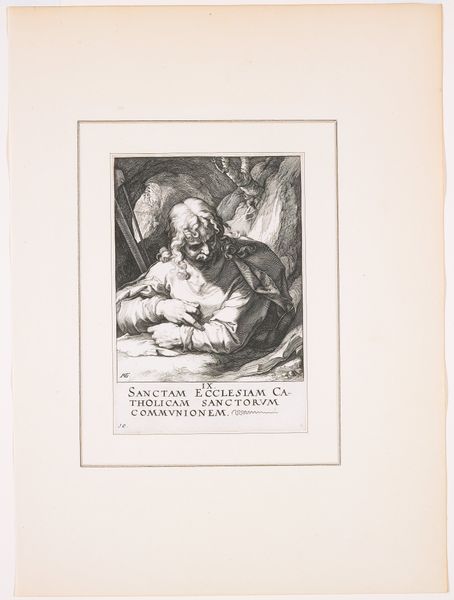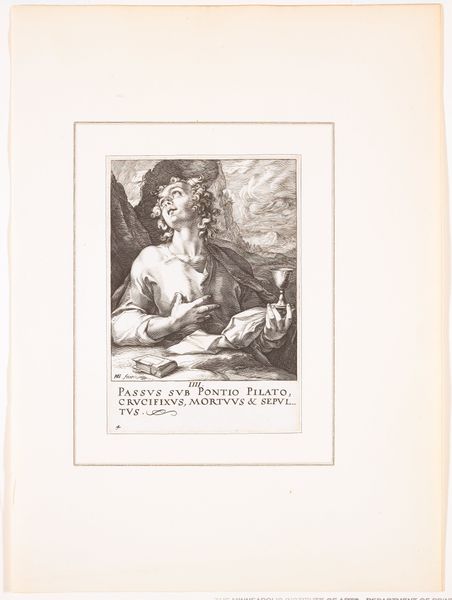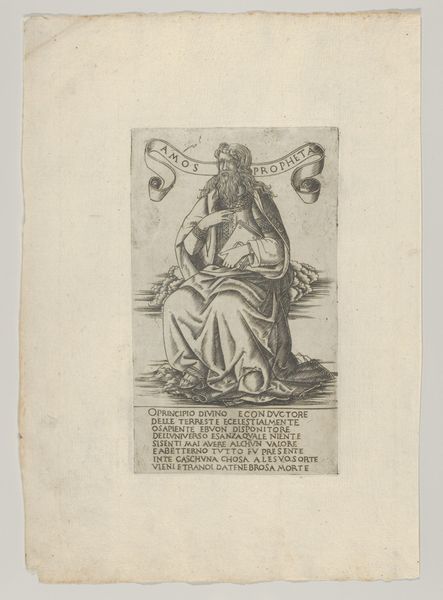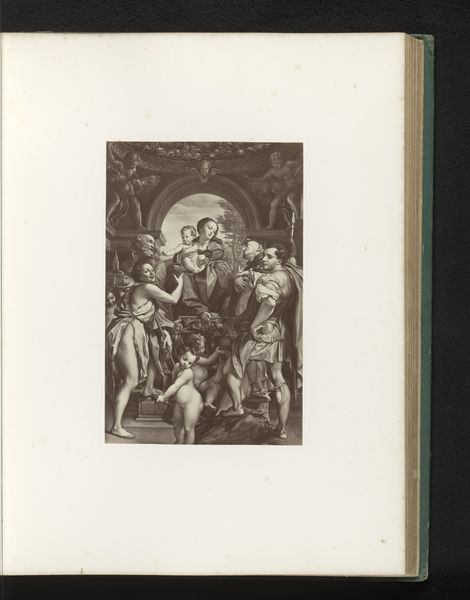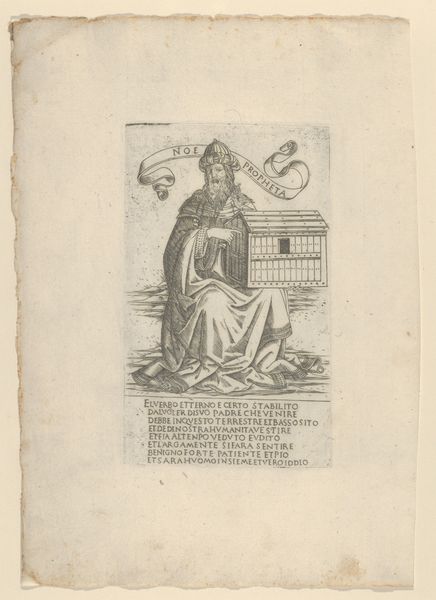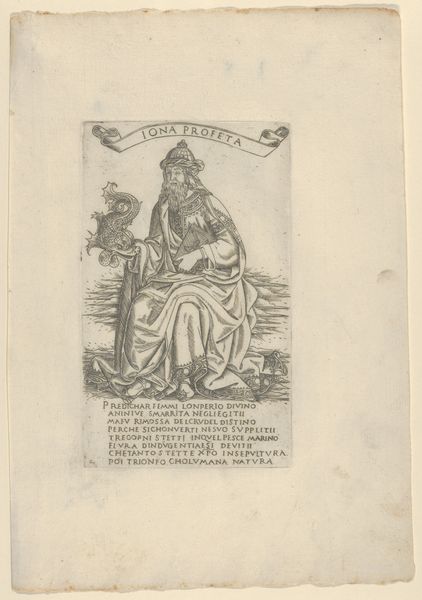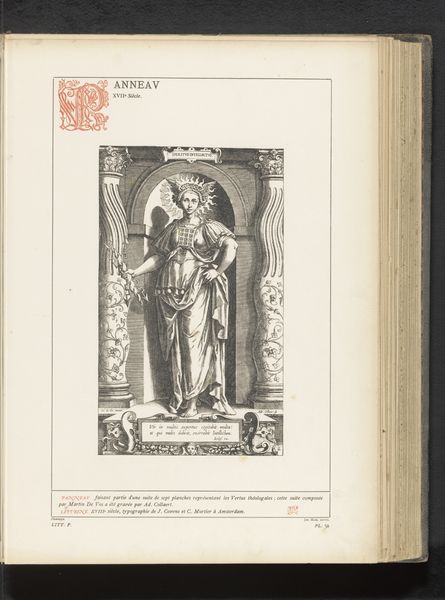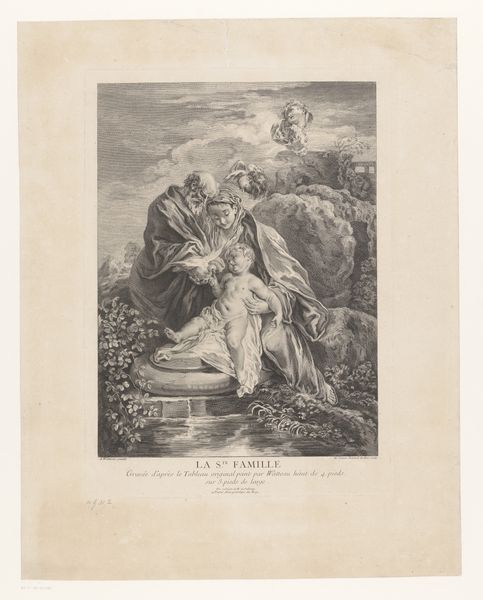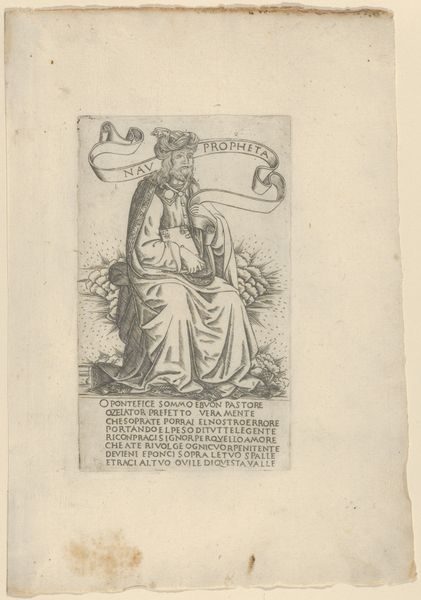
print, engraving
#
photo of handprinted image
#
ink paper printed
# print
#
old engraving style
#
culinary art
#
appetizing
#
ink drawing experimentation
#
watercolour illustration
#
natural palette
#
engraving
#
botanical art
#
watercolor
Dimensions: 5 15/16 x 4 1/16 in. (15.08 x 10.32 cm) (sheet)12 1/2 x 9 3/16 in. (31.75 x 23.34 cm) (mount)
Copyright: Public Domain
Curator: Looking at this print, "Christ" from 1589, crafted by Hendrick Goltzius, the immediate feeling is one of solemn intensity. The lines, all sharp and decisive, create a figure that seems to simultaneously float and command. It feels otherworldly, doesn't it? Editor: It does, especially when viewed through its historical lens. Consider the context of 16th-century Europe. Religious engravings like these weren’t just art; they were tools of reformation, or in some cases, counter-reformation, powerfully disseminating ideologies during periods of intense socio-political and religious upheaval. This Christ, with the orb in hand, isn't just a savior, he’s a figure of global authority. Curator: Absolutely, the orb symbolizing earthly dominion. Goltzius, ever the experimenter, his masterful skill and willingness to challenge convention shines. It feels both meticulously planned and surprisingly gestural. I sense both power and introspection in his expression. It seems to reach a place deep within us. Do you perceive that? Editor: Yes, though perhaps what touches me most deeply is the intentionality of it. Art in this era often had explicit directives; it instructed, it warned, and, fundamentally, it reinforced power structures. To understand that history is to see this work as part of a broader visual narrative shaping beliefs and behaviours. What strikes you in how this resonates with our own epoch? Curator: The sheer technical skill always gets me; to convey so much emotion and texture using just lines on a copper plate… It's kind of mind-boggling when I contemplate it! Plus, there's an intimacy to printmaking. It's reproducible, yes, but each print still holds the artist’s hand in a very direct way. Does that touch your perspective on such artwork as a social instrument? Editor: Precisely! The accessibility of prints allowed for wider dissemination of these messages, fostering a shared visual culture across different social strata. Curator: In essence, this piece, viewed as artistic expression or socio-political document, speaks of an enduring dialogue about power, belief, and the very human desire to shape our world, doesn't it? Editor: Absolutely. It reminds us that every artwork carries a history within it, stories echoing across centuries.
Comments
minneapolisinstituteofart about 2 years ago
⋮
The Dutch Mannerist Hendrik Goltzius was the leading printmaker of his time. A virtuoso engraver, innovative woodblock cutter, and superb draftsman, Goltzius continues to inspire awe with his wondrous technique and to convert even the most jaded art spectators to print enthusiasts. This print is from a series of fourteen engravings—"Christ, the Twelve Apostles, and Paul"—executed in 1589 when Goltzius was at the height of his powers. The series is a kind of demonstration piece displaying Goltzius's unrivaled technique and boundless imagination.
Join the conversation
Join millions of artists and users on Artera today and experience the ultimate creative platform.
